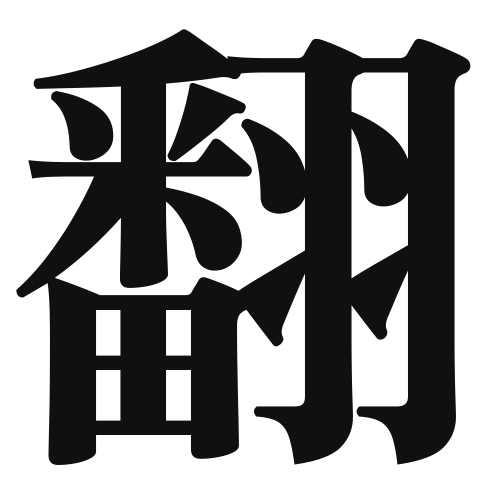1. Overview of Meaning
The kanji “翻” (pronounced “hon” or “han”) generally means “to turn over,” “to flip,” or “to translate.” It is often used in contexts related to changing or converting something from one form to another.
2. Formation and Radical
Formation of the Kanji: The kanji “翻” is a compound character (会意文字) that combines elements to convey its meaning. It consists of the radical for “wing” (羽) which suggests movement, and the character “反” which means “to oppose” or “to turn.” Together, they imply the action of turning or flipping.
Radical: The radical of “翻” is 羽 (hane), which relates to wings or flying, emphasizing the idea of movement and change.
3. Examples of Usage
Common Words and Phrases: Some frequently used words that include “翻” are:
- 翻訳 (ほんやく, honyaku) – translation
- 翻弄 (ほんろう, honrō) – to toy with or manipulate
Example Sentences in Daily Conversation:
- この本を英語に翻訳しました。 (Kono hon o eigo ni honyaku shimashita.) – I translated this book into English.
- 彼は私を翻弄している。 (Kare wa watashi o honrō shite iru.) – He is toying with me.
4. Synonyms and Antonyms
Similar Kanji: A kanji with a similar meaning is “変” (へん, hen), which means “to change.” However, “変” often implies a more general change, while “翻” specifically refers to turning or flipping.
Antonyms: An antonym of “翻” is “固定” (こてい, kotei), which means “to fix” or “to stabilize,” indicating a lack of movement or change.
5. Cultural and Historical Background
Relation to Japanese Culture: The concept of “翻” is significant in Japanese culture, especially in the context of translation and interpretation of literature and art. The act of translating is seen as a way to bridge cultures.
Proverbs and Idioms: One common idiom that relates to “翻” is “翻弄される” (ほんろうされる, honrō sareru), which means to be manipulated or toyed with, often used in contexts of relationships or power dynamics.
